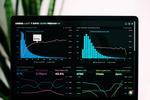Elio Bolliger
Head of Federal Finances Analysis and Forecasting Team in Financial Statistics
Deputy Head of Financial Statistics Division
Swiss Federal Department of Finance
Welcome
I am an Economist at the Swiss Federal Department of Finance in Financial Statistics. My research interests focus on information frictions, expectation formations and macroprudential regulation.
I finished my PhD at the University of Lausanne, HEC, in September 2023. During my PhD, I was a scientific collaborator at the CREA Swiss Institute of Applied Economics. Finished projects include quarterly forecasting of industry exports and the development of a News Sentiment Index with a novel database in Switzerland.
Before starting my PhD, I was an intern at the Financial Stability Division of the Swiss National Bank where I returned to for a research collaboration as part of my PhD.
From November 2022 to April 2023, I joined the Macro Financial Division at the Central Bank of Ireland for a research internship.
Please find my CV here
Disclaimer: The views expressed in all work on this website are those of the authors and are not necessarily reflective of views at any institution I am or previously was affiliated with.
- International Macroeconomics
- Monetary Policy
- Financial Stability
PhD in Economics, 2018-2023
University of Lausanne
Master of Science in Economics, 2016-2018
University of Lausanne
Bachelor of Science in Economics, 2012-2015
University of Bern
News
Working Papers
Projects

Scrap Policy Announcements of the Swiss National Bank
This short script downloads all the policy announcements of the Swiss National Bank in French, German and English. These PDF documents can be used for text analysis.

Credit Suisse Twitter Sentiment
Credit Suisse Twitter Sentiment Analysis

Local Level Model
We discuss the local level model. First, we use simulated time series to apply the Kalman Filter. Then, we discuss the properties of the Maximum Likelihood Estimator (MLE) in a small Monte Carlo simulation exercise in estimating the signa-to-noise ratio. Within this framework, we will also analyze the pile-up problem of the MLE results.
Forecasting Swiss Exports
In this project, I had to develop a model to forecast exports of a Swiss industry. The project included also the presentation of the results, followed by frequent quarterly forecasting and constant assessment of the model.
Text Analysis in R
As an assignment for a Winter School, I used various tools in text analysis to forecast a binary and continous outcome variable. I applied different DTM representations and employed various machine learning methods for forecasting.
Contact
- bolliger.elio@gmail.com
- Swiss Federal Department of Finance, Bern,





